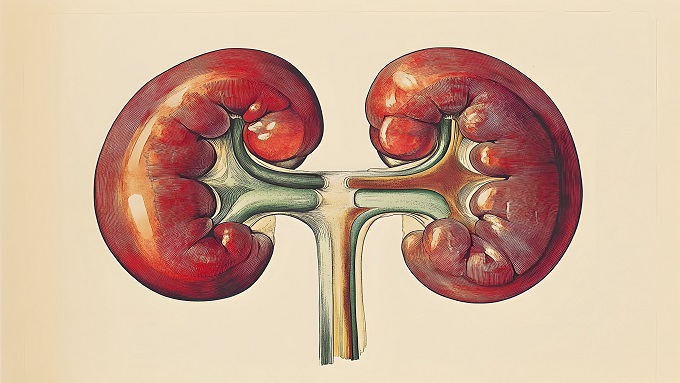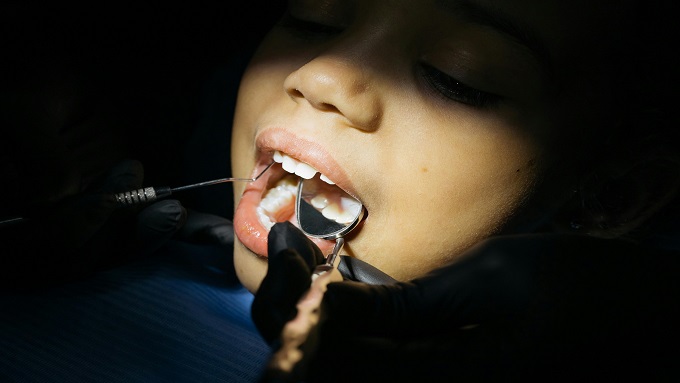EFFECT OF HEATED CANOLA OIL ON AORTA WALL THICKNESS IN RATS

Downloads
Highlights:
1. The use of re-heated cooking oil can give negative impact on health, especially on the cardiovascular system. 2. Unlike other types of cooking oil, repeated heating of canola oil did not show significant change in aortic wall thickness.Abstract
Background: Structural alteration of blood vessels such as formation of atheroma or changes in the thickness of vessel walls, are heavily involved in pathogenesis of cardiovascular disease. Several studies have shown that canola oil has a positive effect on such diseases by reducing LDL and cholesterol levels. However, there may be several negative impacts on reheating canola oil upon administration, similar to other oils. Although canola oil can improve lipid profiles, studies related to how canola oil alters the structure of blood vessels are limited. Objective: The aim of this study was to investigate the effect of heated canola oil on intimal-to-medial thickness (IMT) of Thoracic aorta in high-fat diet rats. Material and Method: A total of 27 rats were divided into 3 groups, the K+, P1, and P2. Rats among the three groups were given a high-fat diet for 14 days, accompanied by consumption of canola oil without heating in the P1, and with repeated heating in the P2. Thoracic aorta was taken on the 15th day and then processed into histological preparations. IMT was measured using CellSens software on a microscope with a magnification of 400. The difference between groups was tested using the one-way ANOVA test on SPSS. Result: The mean and standard deviations of each group in a row were K+ (134.96 and 21.27) P1(132.04 and 27.30) and P2 (152.05 and 31.75). There was no significant difference in IMT between groups (p >0.05). However, the P2 group showed the highest mean of IMT. Conclusion: The consumption of canola oil with or without repeated heating did not result in the changes of the IMT in rats fed with a high-fat diet.
Adeyemi, K.D. Sabow, A.B. Aghwan, Z.A. Ebrahimi, M. Samsudin, A.A. Alimon, A.R. et al., 2016. Serum fatty acids, biochemical indices and antioxidant status in goats fed canola oil and palm oil blend. Journal of Animal Science and Technology, 58(1): 6. doi: 10.1186/s40781-016-0088-2.
Akhtar, A., 2015. The flaws and human harms of animal experimentation. Cambridge Quarterly of Healthcare Ethics, 24(4): 407–419. doi: 10.1017/S0963180115000079.
Amiri, M. Raeisi-Dehkordi, H. Sarrafzadegan, N. Forbes, S.C. Salehi-Abargouei, A., 2020. The effects of canola oil on cardiovascular risk factors: A systematic review and meta-analysis with dose-response analysis of controlled clinical trials. Nutrition, Metabolism and Cardiovascular Diseases, 30(12): 2133–2145. doi: 10.1016/j.numecd.2020.06.007.
Badimon, L. Vilahur, G. 2014. Thrombosis formation on atherosclerotic lesions and plaque rupture. Journal of Internal Medicine, 276(6): 618–632. doi: 10.1111/joim.12296.
Barquera, S. Pedroza, A.T. Medina, C. Hernandez, L.B. Bibbins, K.D. Lozano, R. et al., 2015. Global overview of the epidemiology of atherosclerotic cardiovascular disease. Archives of Medical Research, 46(5): 328–338. doi: 10.1016/j.arcmed.2015.06.006.
Borén, J. Chapman, M.J. Krauss, R.M. Packrad, C.J. Bentzon, J.F. Binder, C.J. et al., 2020. Low-density lipoproteins cause atherosclerotic cardiovascular disease: Pathophysiological, genetic, and therapeutic insights: A consensus statement from the European Atherosclerosis Society Consensus Panel., European Heart Journal, 41(24): 2313–2330. doi: 10.1093/eurheartj/ehz962.
Buijsse, B. Lee, D.H. Steffen, L. Erickson, R.R. Luepker, R.V. Jacobs, D.R. et al., 2012. Low serum glutathione peroxidase activity is associated with increased cardiovascular mortality in individuals with low HDLc's', PLoS ONE. Edited by A. Zirlik, 7(6): e38901. doi: 10.1371/journal.pone.0038901.
Chen, C. Khismatullin, D.B., 2015. Oxidized low-density lipoprotein contributes to atherogenesis via co-activation of macrophages and mast cells. PLOS ONE. Edited by O. Eniola-Adefeso, 10(3): e0123088. doi: 10.1371/journal.pone.0123088.
Förstermann, U. Xia, N. Li, H., 2017. Roles of vascular oxidative stress and nitric oxide in the pathogenesis of atherosclerosis. Circulation Research, 120(4): 713–735. doi: 10.1161/CIRCRESAHA.116.309326.
Frumkin, H. Bratman, G.N. Breslow, S.J. Cochran, B. Kahn, P.H. Lawler, J.J. et al., 2017. Nature contact and human health: A research agenda. Environmental Health Perspectives, 125(7): 075001. doi: 10.1289/EHP1663.
Gammone, M. Riccioni, G. Parrinello, G. D'Orazio, N. 2018. Omega-3 polyunsaturated fatty acids: benefits and endpoints in sport. Nutrients, 11(1): 46. doi: 10.3390/nu11010046.
Ghobadi, S. Hassanzadeh-Rostami, Z. Mohammadian, F. Zare, M. Faghih, S., 2019. Effects of canola oil consumption on lipid profile: A systematic review and meta-analysis of randomized controlled clinical trials. Journal of the American College of Nutrition, 38(2): 185–196. doi: 10.1080/07315724.2018.1475270.
Gillingham, L.G. Gustafson, J.A. Han, S.Y. Jassal, D.S. Jones, P.J.H., 2011. High-oleic rapeseed (canola) and flaxseed oils modulate serum lipids and inflammatory biomarkers in hypercholesterolaemic subjects. British Journal of Nutrition, 105(3): 417–427. doi: 10.1017/S0007114510003697.
Gulesserian, T. Widhalm, K., 2002. Effect of a rapeseed oil substituting diet on serum lipids and lipoproteins in children and adolescents with familial hypercholesterolemia. Journal of the American College of Nutrition, 21(2): 103–108. doi: 10.1080/07315724.2002.10719201.
Islam, M.A. Amin, M.N. Siddiqui, S.A. Hossain, M.P. Sultana, F. Kabir, M.R., 2019. Trans fatty acids and lipid profile: A serious risk factor to cardiovascular disease, cancer and diabetes. Diabetes & Metabolic Syndrome: Clinical Research & Reviews, 13(2): 1643–1647. doi: 10.1016/j.dsx.2019.03.033.
Jones, P.J. Senanayake, V.K. Pu, S. Jenkins, D.J.A. Connelly, P.W. Lamarche, B. et al., 2014. DHA-enriched high–oleic acid canola oil improves lipid profile and lowers predicted cardiovascular disease risk in the canola oil multicenter randomized controlled trial. The American Journal of Clinical Nutrition, 100(1): 88–97. doi: 10.3945/ajcn.113.081133.
Kostik, V. Memeti, S. Bauuer, B., 2013. Fatty acid composition of edible oils and fats. Journal of Hygienic Engineering and Design, 4: 112–116.
Lalenoh, I. Aminuddin., 2019. The carotid intima-media thickness in workers with high and low exposure to air pollution. Indian Journal of Public Health Research & Development, 10(9).
Lin, L. Allemekinders, H. Dansby, A. Campbell, L. Durance-Tod, S. Berger, A. et al., 2013. Evidence of health benefits of canola oil. Nutrition Reviews, 71(6): 370–385. doi: 10.1111/nure.12033.
Lippi, G. Mattiuzzi, C. Cervellin, G. 2015. Fried food consumption and ischemic heart disease. International Journal of Cardiology, 190: 210–211. doi: 10.1016/j.ijcard.2015.04.178.
Maramis, R. Kaseke, M. Tanudjadja, G., 2014. Gambaran histologi aorta tikus wistar dengan diet lemak babi setelah pemberian ekstrak daun sirsak (Annona muricata L.). eBiomedik, 2(2). doi: 10.35790/ebm.v2i2.4702.
Mawarti, R. Suwanto, D. Putranto, J.N.E. Soemantri, D., 2020. Moderate cardiovascular risk factor among Indonesian: Do carotid intima-media thickness (CIMT) predict further?. Cardiovascular and Cardiometabolic Journal (CCJ), 1(2): 38. doi: 10.20473/ccj.v1i2.2020.38-44.
Parung, A. Herwanto, B. Liben, P., 2016. Tingkat mortalitas terapi reperfusi pada penderita stemi di RSUD Dr. Soetomo Surabaya. JUXTA: Jurnal Ilmiah Mahasiswa Kedokteran Universitas Airlangga, 8(1): 17–23. doi: 10.20473/juxta.V8I12016.17-23.
Platt, M.O. Ankeny, R.F. Shi, G.P. Weiss, D. Vega, J.D. Taylor, W.R., 2007. Expression of cathepsin K is regulated by shear stress in cultured endothelial cells and is increased in endothelium in human atherosclerosis. American Journal of Physiology-Heart and Circulatory Physiology, 292(3): H1479–H1486. doi: 10.1152/ajpheart.00954.2006.
Putra, G.S. Selviana, S., 2017. Faktor-faktor yang berhubungan dengan kepemilikan jamban sehat di Desa Empakan Kecamatan Kayan Hulu. Jurnal Kesmas (Kesehatan Masyarakat) Khatulistiwa, 4(3): 238. doi: 10.29406/jkmk.v4i3.866.
Ramprasath, V.R. Jones, P.J.H. Buckley, D.D. Woollett, L.A. Heubi, J.E., 2012. Decreased plasma cholesterol concentrations after PUFA-rich diets are not due to reduced cholesterol absorption/synthesis. Lipids, 47(11): 1063–1071. doi: 10.1007/s11745-012-3708-8.
Roiaini, M. Ardiannie, T. Norhayati, H., 2015. Physicochemical properties of canola oil, olive oil and palm olein blends. International Food Research Journal, 22(3): 1227–1233.
Seidman, M.A. Padera, R.F. Schoen, F.J., 2020. Cardiovascular medical devices. in Biomaterials Science. Elsevier: 1033–1050. doi: 10.1016/B978-0-12-816137-1.00068-4.
Song, J. Park, J. Jung, J. Lee, C. Gim, S.Y. Ka, H. et al., 2015. Analysis of trans fat in edible oils with cooking process. Toxicological Research, 31(3): 307–312. doi: 10.5487/TR.2015.31.3.307.
de Souza, R.J. Mente, A. Maroleanu, A. Cozma, A.I. Ha, V. Kishibe, T. et al., 2015. Intake of saturated and trans unsaturated fatty acids and risk of all cause mortality, cardiovascular disease, and type 2 diabetes: Systematic review and meta-analysis of observational studies. BMJ: h3978. doi: 10.1136/bmj.h3978.
Stott-Miller, M. Neuhouser, M.L. Stanford, J.L., 2013. Consumption of deep-fried foods and risk of prostate cancer. The Prostate, 73(9): 960–969. doi: 10.1002/pros.22643.
Thandapilly, S.J. Raj, P. Louis, X.L. Perera, D. Yamanagedara, P. Zahradka, P. et al., 2017. Canola oil rich in oleic acid improves diastolic heart function in diet-induced obese rats. The Journal of Physiological Sciences, 67(3): 425–430. doi: 10.1007/s12576-016-0504-x.
Wang, F.C. Gravelle, A.J. Blake, A.I. Marangoni, A.G., 2016. Novel trans fat replacement strategies. Current Opinion in Food Science, 7: 27–34. doi: 10.1016/j.cofs.2015.08.006.
WHO., 2014. Global status report on noncommunicable diseases 2014. Geneva.
Winston, G.J. Palmas, W. Lima, J. Polak, J.F. Bertoni, A.G. Burke, G. et al., 2013. Pulse pressure and subclinical cardiovascular disease in the multi-ethnic study of atherosclerosis. American Journal of Hypertension, 26(5): 636–642. doi: 10.1093/ajh/hps092.
Yu, J. Wang, J. Liu, C. Liu, Z. Wang, Q., 2012. Application of response surface methodology to optimise supercritical carbon dioxide extraction of oil from rapeseed (Brassica napus L.). International Journal of Food Science & Technology, 47(6): 1115–1121. doi: 10.1111/j.1365-2621.2012.02948.x.
Zeb, A. 2019. Food frying: chemistry, biochemistry, and safety. John Wiley & Sons.
Zhuge, Y. Zhang, J. Wen, Z. Niu, C. Xu, K. Ji, H. et al., 2020. Role of smooth muscle cells in cardiovascular disease. International Journal of Biological Sciences, 16(14): 2741–2751. doi: 10.7150/ijbs.49871.
Copyright (c) 2022 Mochammad Abdul Aziz, Reny I'tishom, Purwo Sri Rejeki, Tri Hartini Yuliawati

This work is licensed under a Creative Commons Attribution 4.0 International License.
1. The journal allows the author(s) to hold the copyright of the article without restrictions.
2. The journal allows the author(s) to retain publishing rights without restrictions.
3. The legal formal aspect of journal publication accessibility refers to Creative Commons Attribution 4.0 International License (CC-BY).
































